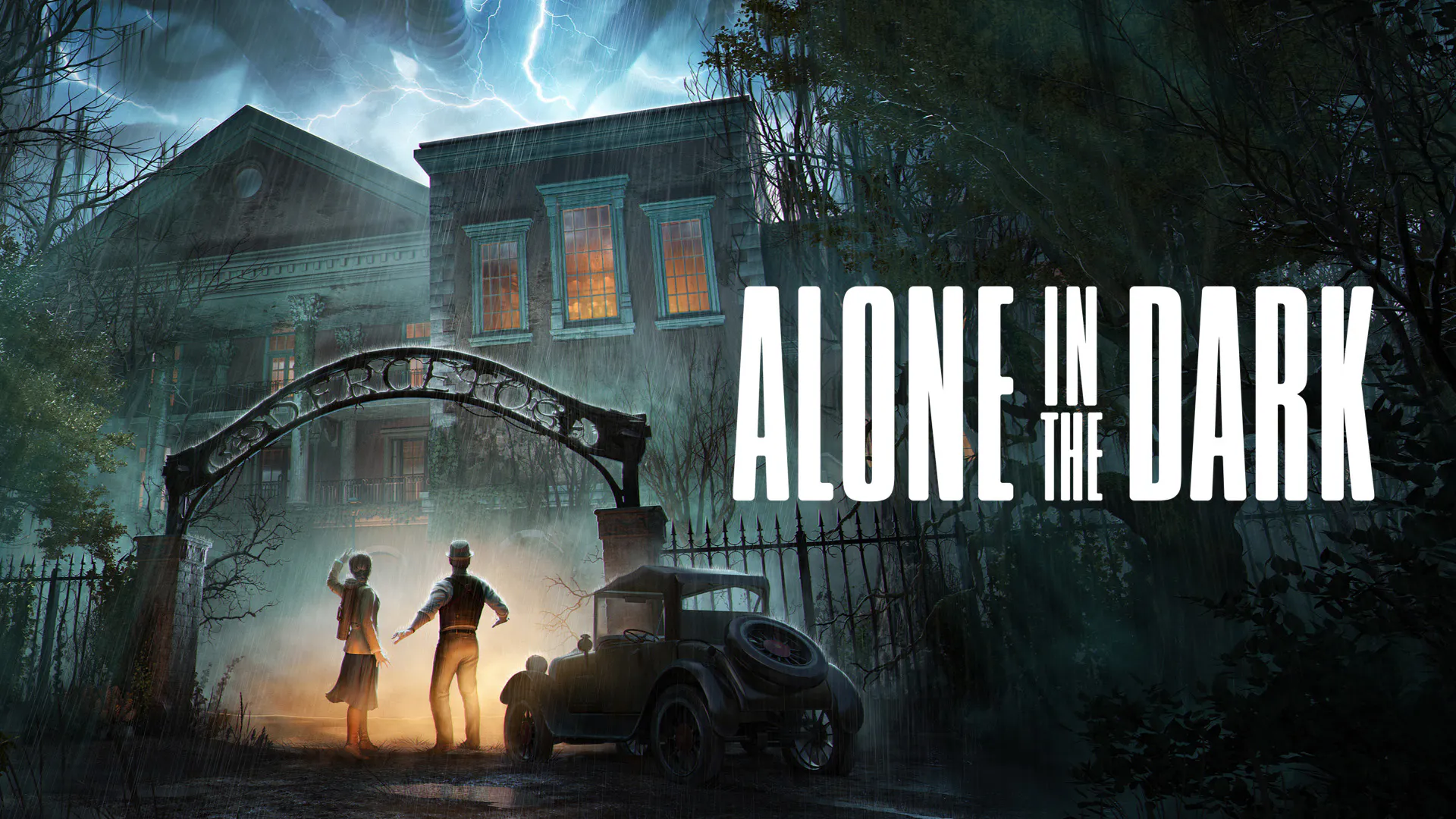I have a potentially conventional relationship with Alone in the Dark. People around my age would have probably seen the 2008 reboot of the franchise on the shelves of their local Blockbuster. I was devoid of knowing the game’s roots and took it at face value when I rented it. It was a massive departure from the methodical puzzle-solving and deliberately slow combat and instead felt more like an action film. However, outside of its impressive opening that saw you scaling a burning building to survive, I couldn’t tell you anything else that happened.
The franchise since then has been relatively in the dark (save your boos!), until now. Pieces Interactive have gone back to the gothic setting of Decerto Manor, following the same characters from the original 1992 classic, but revitalising the series with all the modern bells and whistles in video games. Over-the-shoulder gameplay, Hollywood actors in the lead roles and a story written by Mikael Hedberg (Soma, Amnesia: The Dark Descent) sounds like a recipe for the franchise’s return to the pantheon of survival horrors, but would it have been better left alone? Let’s get into it.
Bad Juju
The game opens with the two playable protagonists, Emily Hartwood (Jodie Comer) and Edward Carnby (David Harbour), driving through Louisianna to Decerto Manor. Emily’s uncle, Jeremy, sent an unnerving letter from the manor that spurred her to check on him – with the help of private investigator Carnby. After an exposition dump from the pair of them in the car, you arrive at Decerto Manor and decide which character you’ll take the journey with.
Set in the 1920s, what transpires is a journey through the manor and beyond as you’re on the hunt for Jeremy. Decerto Manor contains madness more than its inpatients, however, as The Dark Man’s influence leads back to Jeremy’s disappearance, as well as the blending of reality and nightmares for yourself and the residents. The story is steeped in African cosmology and Haitian folklore, breathing authenticity into the old-timey Louisianna setting.
Alone in the Dark feels rich with its surrounding mysticism and is by far the most interesting aspect of the storytelling. The antithesis then would be the two leading roles played by Jodie Comer and David Harbour. I don’t know what directing they were given, or how the process went, but the game features the most uninterested, least emotionally delivered performances I’ve experienced in a while. It almost comes off as sarcastic or even insincere whenever the characters speak. Maybe it’s a hilarious callback to the opening scene from the original game but that’s one long-running gag that doesn’t pay off.
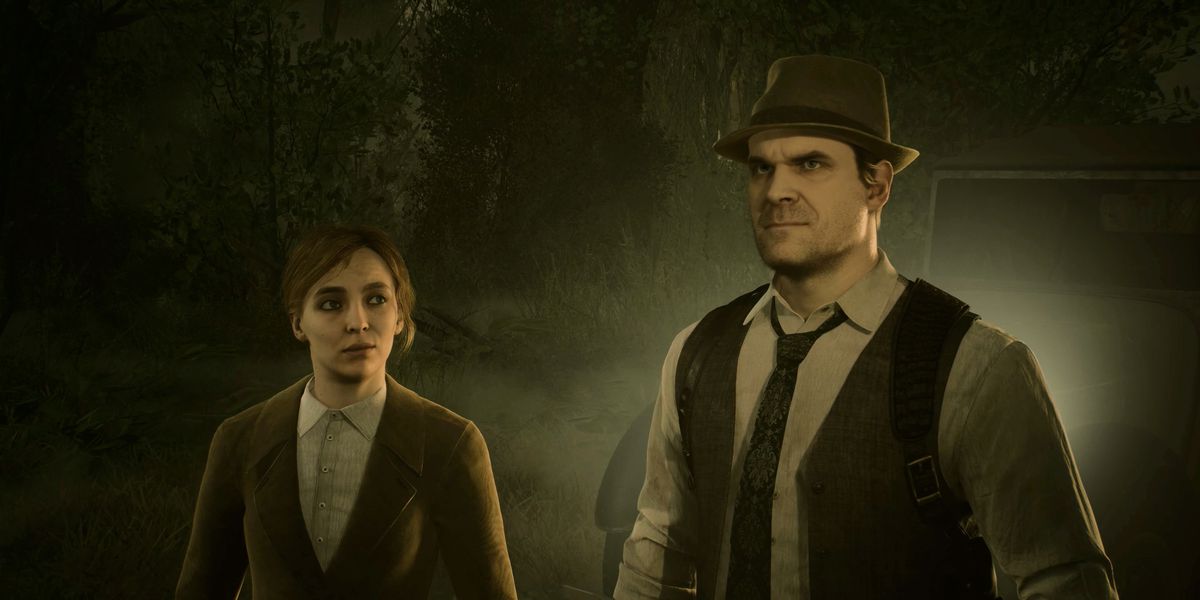
The Past Should Stay Dead
Despite the emotionless protagonists, the cast surrounding them does a fairly decent job of conveying the aloof mystery that unfurls. Very early on, you come across an ancient talisman that aids you in your wild goose chase to find Jeremy. This plays into the main loop of puzzles that you’ll face, deciphering codes to transport you into nightmare scenarios throughout the game. It’s an excellent way to give scope and add paranoia to the narrative, but I really wish they did more with it.
As there is essentially one of two stories to choose from, I had hoped there was a differing journey that explores the character’s own problems. There are a couple of alternate moments that I couldn’t find during my playthroughs, or so the trophy list states, but the main narrative across both characters is almost entirely the same, and doesn’t play out simultaneously per playthrough but rather instead of one another. It feels like a missed trick to have varying perspectives of one narrative and doesn’t overall add to the replayability.
Outside of one main diversion per character and some of the dialogue changing between which protagonist speaks to whom, there really isn’t anything else different. For me, the mystery, great sense of place and cool level design did a lot of the heavy lifting to my enjoyment but it felt like a game from a bygone era.
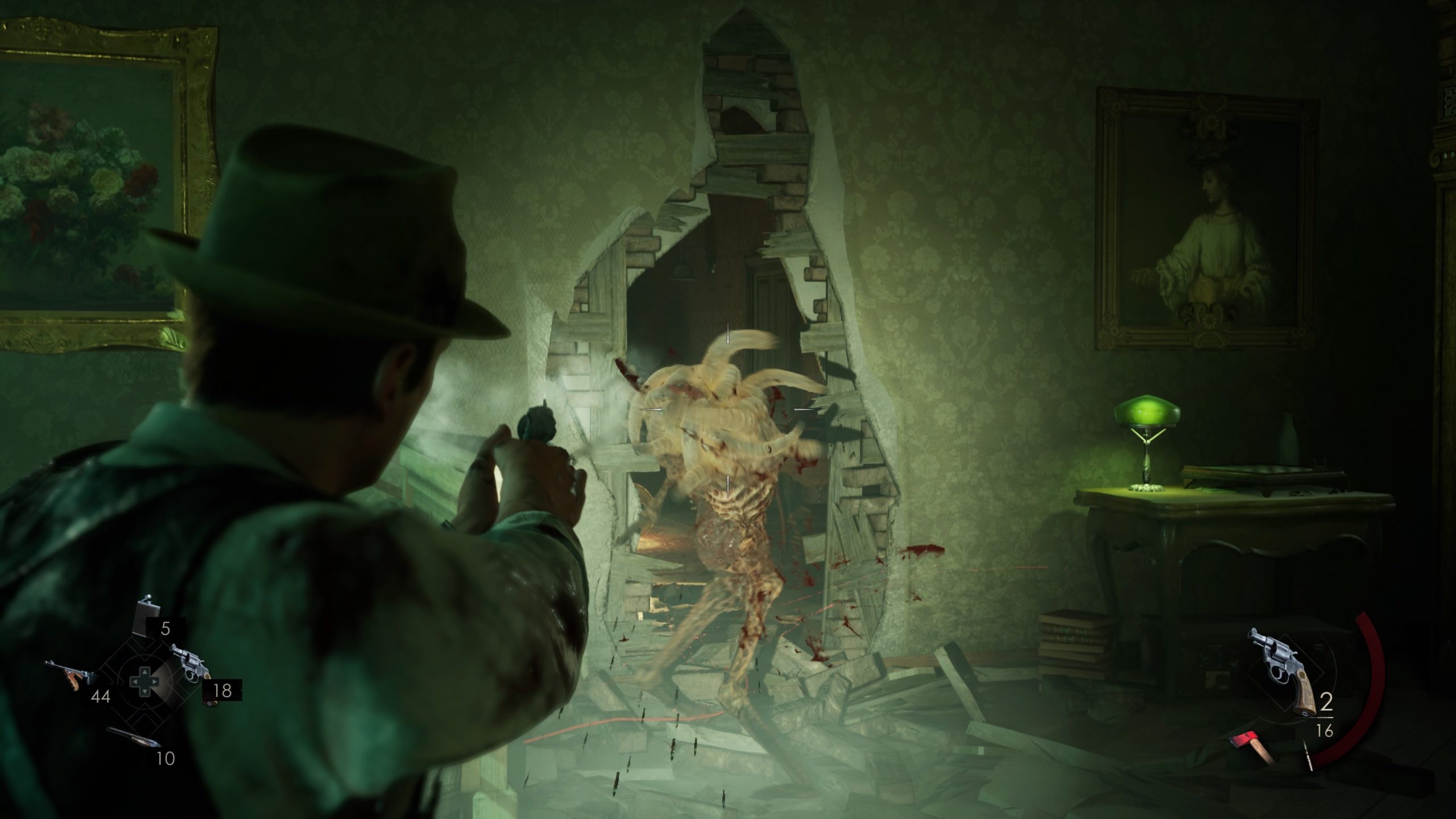
Trouble In A Swampy Paradise
And that bleeds into the gameplay too. Gone are the days of fixed camera angles, instead, Alone in the Dark utilises the over-the-shoulder camera that games like the Resident Evil remakes, Dead Space and even the upcoming Silent Hill 2 remake all have. Alone in the Dark doesn’t quite nail the camera angle though, as it sits awkwardly between too far, but also too close because the character and their movements obstruct your environment, unless you position it over their head.
It’s a blemish in a flurry of others that paint an overall unpolished picture. Character animations are stilted, there are repeated moments where the game will pause for a few frames before opening a door – assumedly to load the level in, objects (collectables, puzzle pieces) despawn or respawn and even hard crashes later in the game. The closer I got to the end, the more it felt like the game was precariously put together. It never got completely in the way of my experience, but those sensitive to glitches may want to wait for an upcoming patch.
Despite its flaws, the gameplay does just enough to keep itself moderately entertaining. Locked doors, items without context and an abundance of reading materials litter the decrepit halls of Decerto. It fills out the context of the world in cool ways, with highlighted words hinting at some puzzle importance. There was only one puzzle that was so obvious I looked past it, otherwise, they’re relatively simple yet engaging.
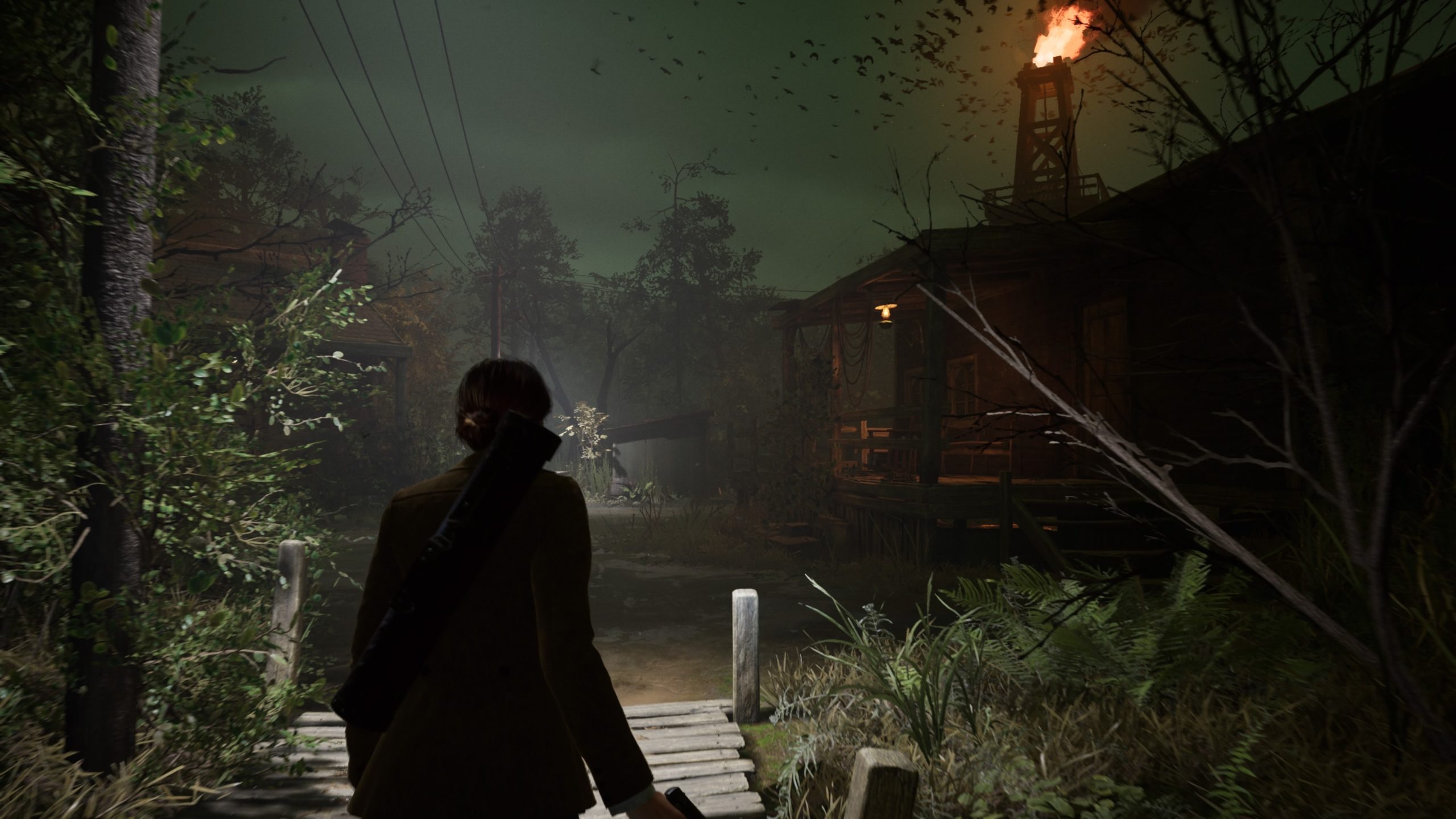
Making Peace With The Shadows
If you’re finding it too easy, there is a neat list of adjustments that don’t change the puzzles themselves but vary in how much the game holds your hand. Even with all the hand-holding, you’ll still have to do the thinking for yourself, so it always felt rewarding. Changing the difficulty also alters the combat encounters. Resources will differ in scarcity (bullets, health) and enemies will take more damage and deal more also.
These moments are few and far between though and they are a little lacklustre. Aiming feels floaty, dodging is awkward yet effective and the enemies just aren’t intimidating. They’re slow with easily telegraphed attacks and dodging is comically fast, sending you across the room.
It’s not completely bad, but I do gravitate towards survival horrors for their intense enemy encounters and Alone in the Dark just doesn’t have it. There’s a trophy to not use a healing item throughout the game – which I did on my first playthrough – and it really didn’t pose a challenge, despite being one shot from death for a good 2/3 of the game.
The combat and puzzles are the two core gameplay elements you’ll see but there are sequences where it diverts from regular gameplay. I’ll keep it light for spoilers but there are moments where the enemy isn’t killable, so instead you have to dodge their area of effect that can kill you.
However, the level doesn’t facilitate a space to effectively run away from them. Resulting in tedious goading into one direction, then another, and it’ll never happen again after that. And then there are the deeply unsatisfying boss fights, making me wish the game just focused on what it was better at.
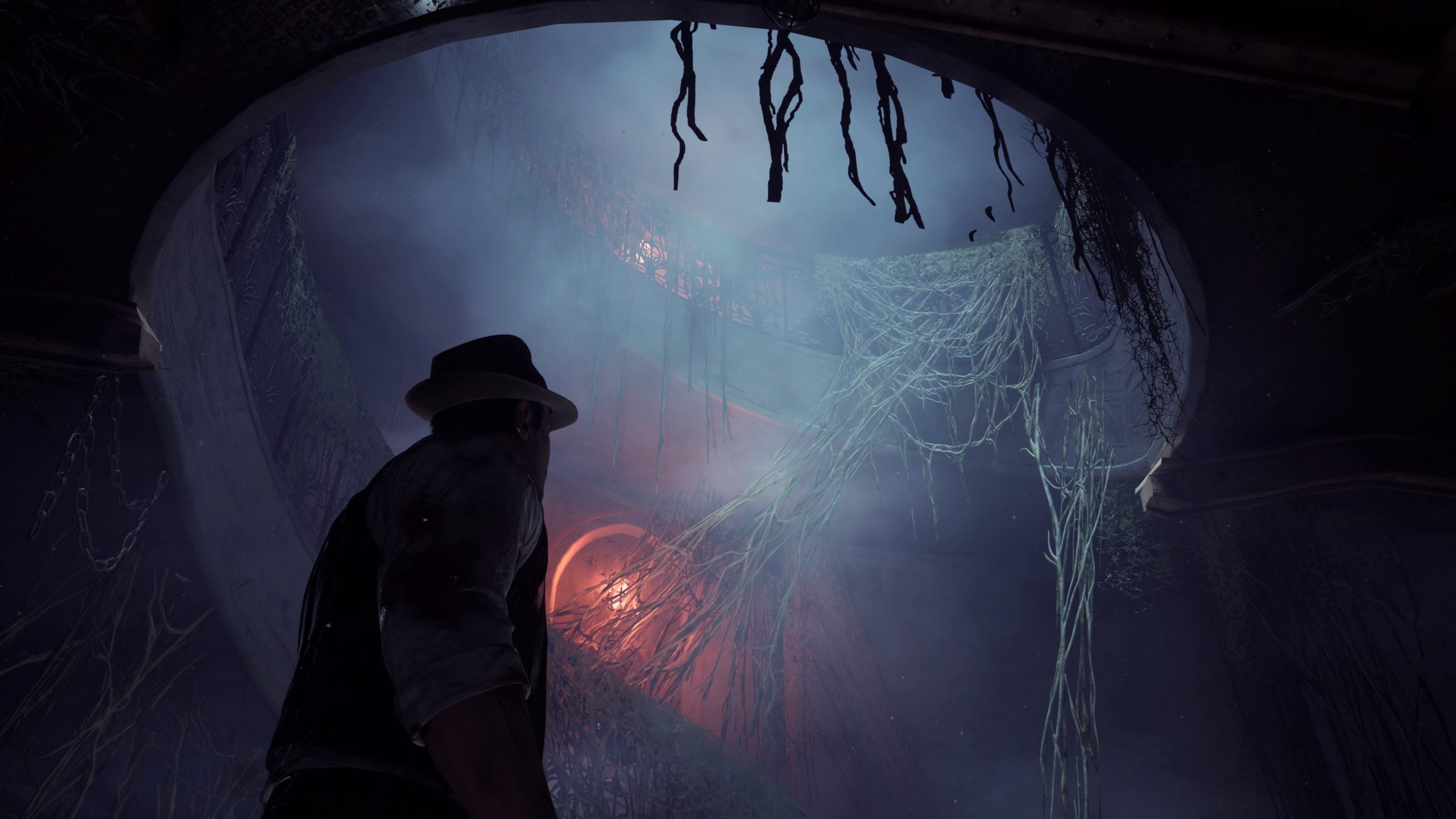
Bayou-my
Alone in the Dark, like most games of this generation, has a quality or performance mode. I’m not completely savvy to know specifics but the fidelity in quality mode doesn’t counter the extremely choppy frame rate. Performance on the inverse has a decently stable 60fps, possibly at 1080p which is fine enough.
I never expected the game to be a technically visual feast, but I was so drawn in by the art direction. Thankfully, this is where the game absolutely shines. The overgrown bayou-ridden landscapes of New Orleans that bleed into the rooms of Decerto are undeniably atmospheric. The lighting is on point as it casts shadows in fog to create some picture-esque moments. It’s a place you can almost smell, it does that good of a job transporting you there.
Despite how good the game looks, it’s not quite the horror-fuelled experience people may think. My best comparison would be the 1999 classic The Mummy. There are some moments to create fear, using some ancient Egyptian history, but you’re kind of preoccupied with the hot characters and then the general camp vibes just make the scares feel toothless.
I’m fine with that and it even feels full circle with how the original game dealt with the horror elements, but it does dampen what I feel makes a good survival horror. Some of what aids the dense atmosphere, however, is the astounding music. Pieces Interactive coined the term ‘doom jazz’ which perfectly describes how it sounds.
Hearing the brass instruments whale over the methodical droning double bass gives off that paranoid feeling of a smoky bar, with untrusting people at their stools giving you the side eye. The dev team’s attention to historic Louisianna and making it spooky is a unique, refreshing and overall immersive setting that really worked.
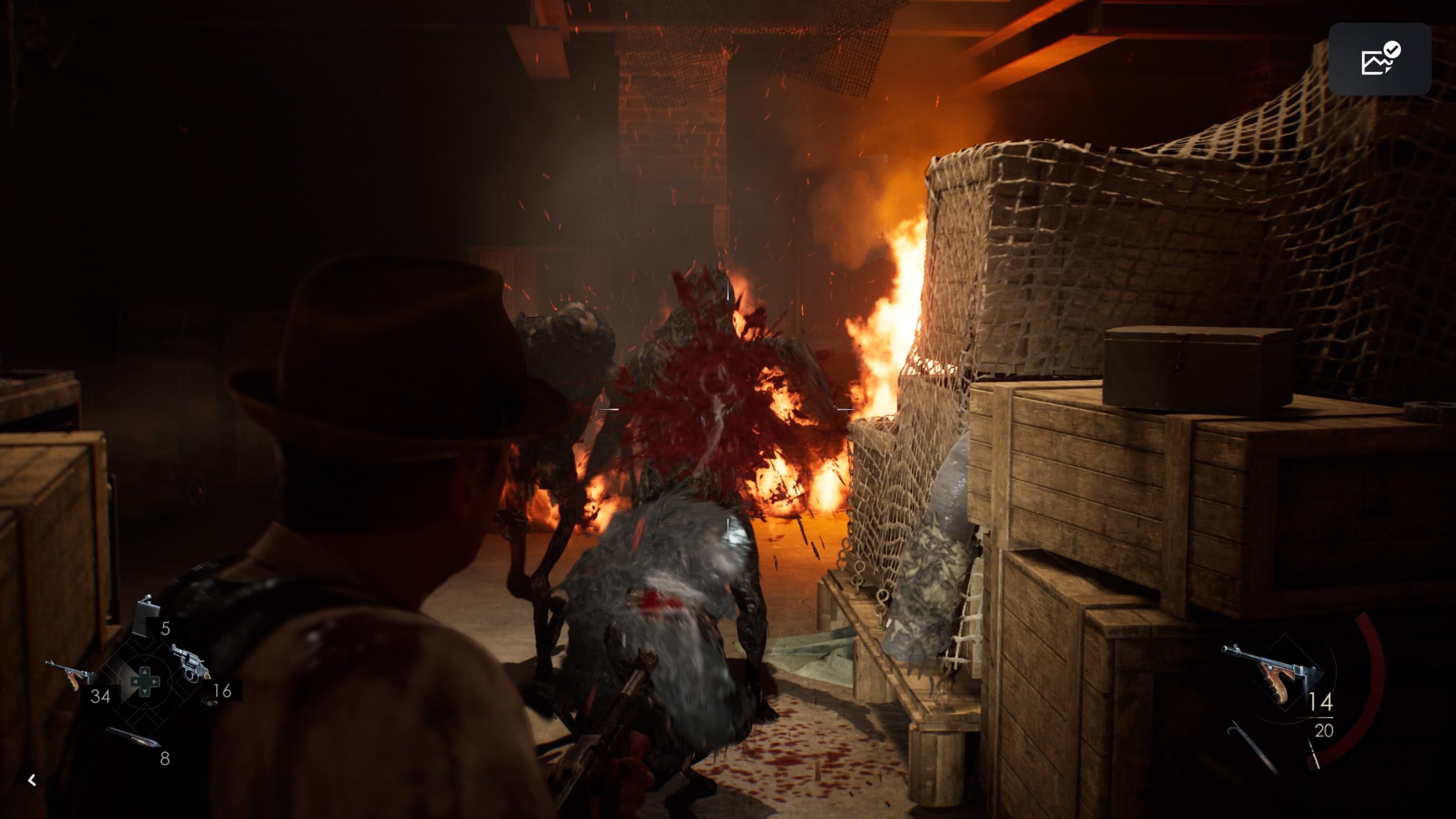
Left In The Dark
As you can probably tell by now, there are a good amount of elements that contradict each other on how much I enjoyed playing through Alone in the Dark. If you’re not sensitive to unpolished elements, you may enjoy this despite its flaws. Which is where I see myself, for the most part. I love the setting, the plot and twists were interesting and kept me guessing and the art direction/music is wonderfully stylish. Think of Mafia 3 if it was a paranoid nightmare and you’ve got Alone in the Dark.
With all that said, the gameplay holds it back from being significant. At worst it’s forgettable, at best it’s just okay; sometimes that’s fine when everything else is firing on all cylinders – though it never quite gets there for me. I mentioned earlier that the game feels like it’s from a bygone era and that’s my main takeaway from it. I wouldn’t even say this is last gen but maybe PS3/Xbox 360 era, which isn’t inherently bad but it’s all the worst parts of nostalgia coming to fruition.
Alone in the Dark returns with a refreshing take in terms of its setting and atmosphere. However, it never gets to shake off its nostalgic cobwebs to be a fulfilling game that can go toe-to-toe with survival horror peers. With lacklustre gameplay and uninterested protagonists dampening the experience, you can’t help but feel this game is from a bygone era.
Alone in the Dark is available 20th March on PlayStation 5 (review platform), Xbox Series X|S and PC via Steam.
Developer: Pieces Interactive
Publisher: THQ Nordic
Disclaimer: In order to complete this review, we were provided with a promotional copy of the game. For our full review policy, please go here.
If you enjoyed this article or any more of our content, please consider our Patreon.
Make sure to follow Finger Guns on our social channels –Twitter, Facebook, Twitch, Spotify or Apple Podcasts – to keep up to date on our news, reviews and features.
